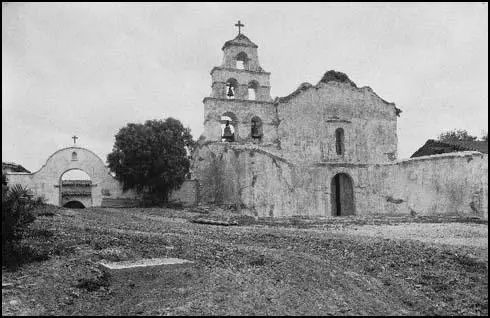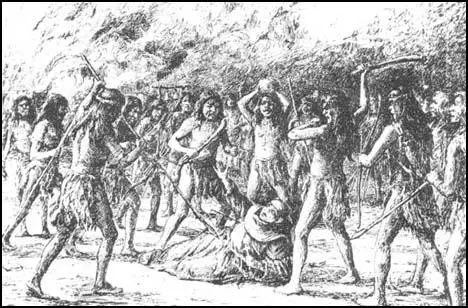San Diego
It is believed that people from north-east Asia migrated to America about 12,000 years ago. These people separated into groups that chose different areas to settle. The Kumeyaay were the dominant group in the San Diego area. They belonged to a larger linguistic group known as the Yuma.
In 1765 King Carlos III of Spain sent José de Gálvez to New Spain with orders to organize the settlement of Alta California. Inspector General Gálvez recruited Gaspar de Portolà and Junipero Serra in what became known as the "Sacred Expedition". It was decided that three ships, the San Carlos, the San Antonio, and the San José, should sail to San Diego Bay. It was also agreed to send two parties to make an overland journey from the Baja to Alta California.
The first ship, the San Carlos, sailed from La Paz on 10th January, 1769. The other two ships left on 15th February. The first overland party, led by Fernando Rivera y Moncada, left from the Misión San Fernando Rey de España de Velicatá on 24th March. With him was Father Juan Crespi, who had been given the task of recording details of the trip. The expedition led by Portolà, which included Father Serra, set off on 15th May.
Moncada reached San Diego in May. He built a camp and waited for the others to arrive. The San Antonio, reached its destination in fifty-four days. The San Carlos took twice that time and the San José was lost with all aboard. The second overland party arrived on 1st July. Out of a total of two hundred and nineteen men who left Baja California, just over a hundred survived the journey. Some of these were to die while the San Antonio sailed back to La Paz for supplies and reinforcements.
Gaspar de Portolà was named as governor of San Diego. The colonists built a Presidio that included a chapel and residential quarters surrounded by a palisade. The settlement was close to a Kumeyaay village. Tracy Salcedo-Chouree, the author of California's Missions and Presidios (2005), has pointed out that their "natural suspicion flowered into animosity when the soldiers began raping their women and stealing their food."

In 1774 the missionaries moved about six miles inland from the Presidio to take advantage of more productive farmland and a better source of water. Luis Jayme organised the building of the Mission San Diego de Alcala. It is claimed that they converted more than 500 local people to Christianity. However, in November 1775, 800 Kumeyaay attacked the mission and destroyed it. According to Francis J. Weber: "Instead of running for shelter to the stockhold, Fray Luís Jayme resolutely walked toward the howling band of natives... In a frenzied orgy of cruelty, the Indians seized him, stripped off his garments, shot eighteen arrows into his body and then pulverized his face with clubs and stones... Early the next morning, the body of the thirty-five year old missionary was recovered in the dry bed of a nearby creek. His face was so disfigured that he could only be recognized by the whiteness of his flesh under a thick crust of congealed blood." Jayme is considered to be the first Catholic martyr in Alta California.

The following year a new mission church was erected on the site under the supervision of Father Junipero Serra. Gradually the missionaries began to have an impact on Native Americans and it was reported that in the year, 1797 it had converted 565 to Christianity. These neophytes worked in the mission's orchards, croplands and vineyards and took care of the herds of sheep, cattle and horses.
General Zachary Taylor defeated the Mexicans at Palo Alto on 8th May, 1846. The following year American soldiers occupied the mission. It has been claimed that: "The legacy of the U.S. Cavalry as mission keepers is one of use and abuse. Mission literature notes that in some cases soldiers shored up the disintegrating adobe structures; in others, they simply demolished them." It was another sixteen years before the mission was returned to the Catholic Church.
